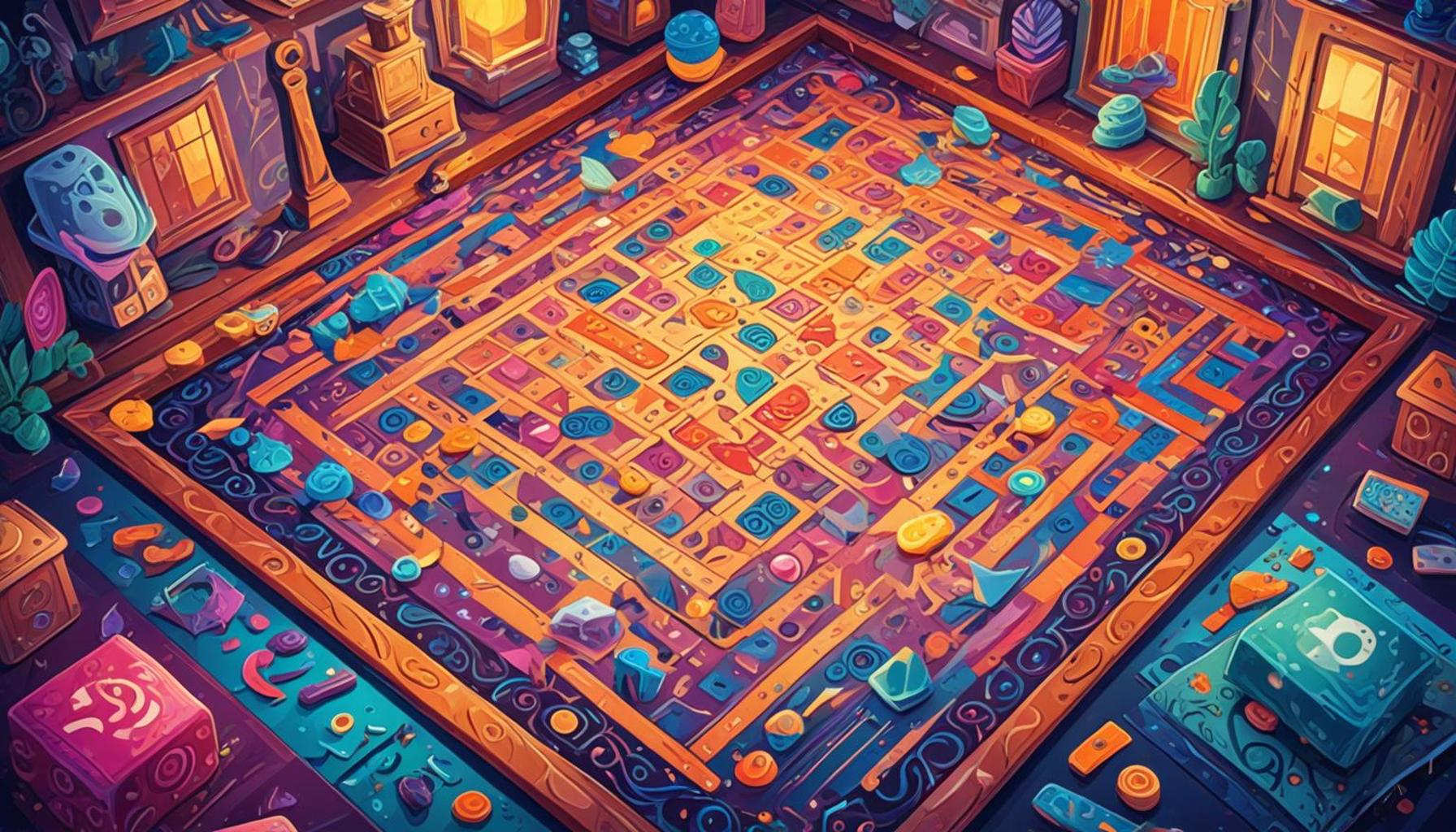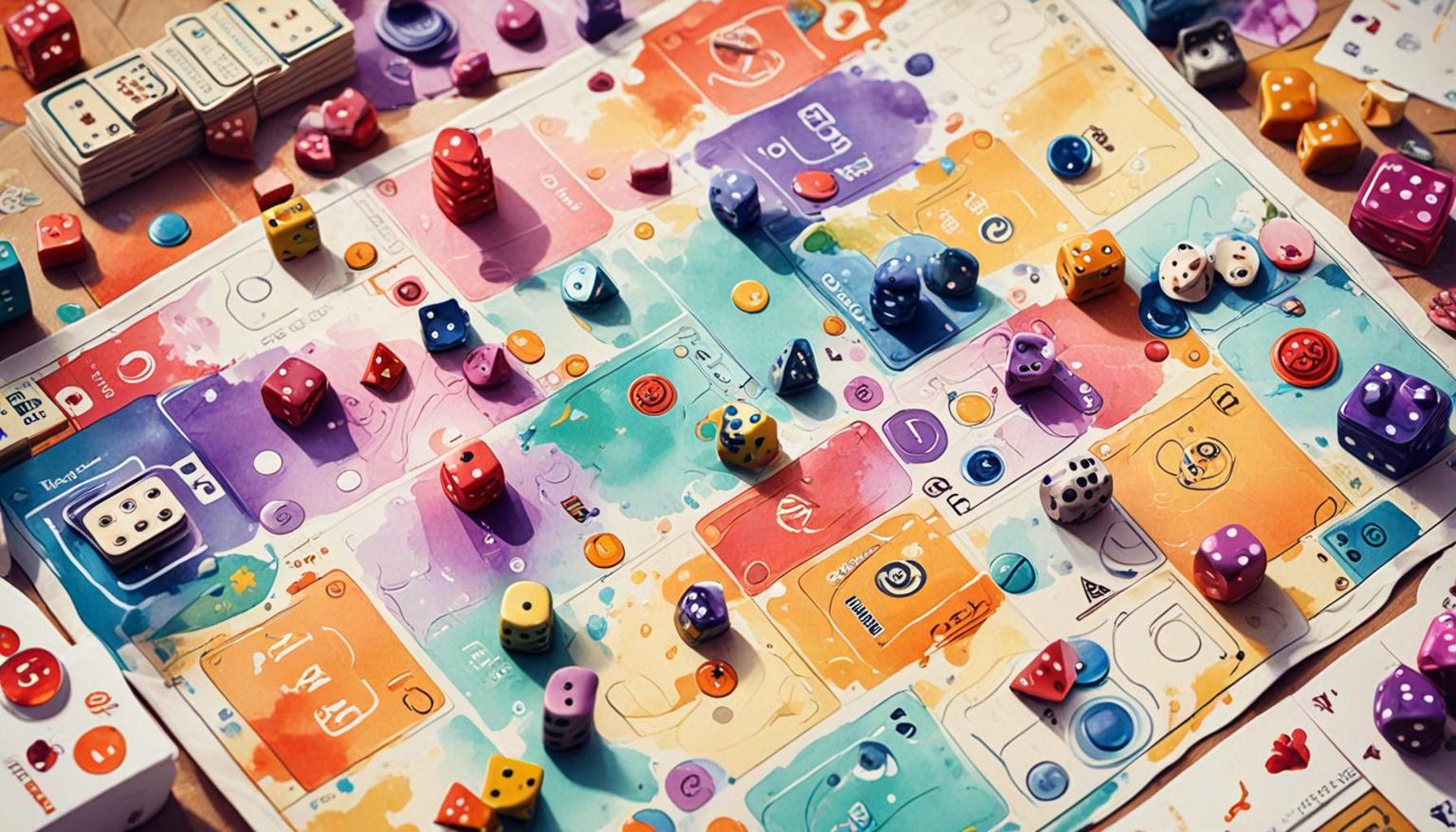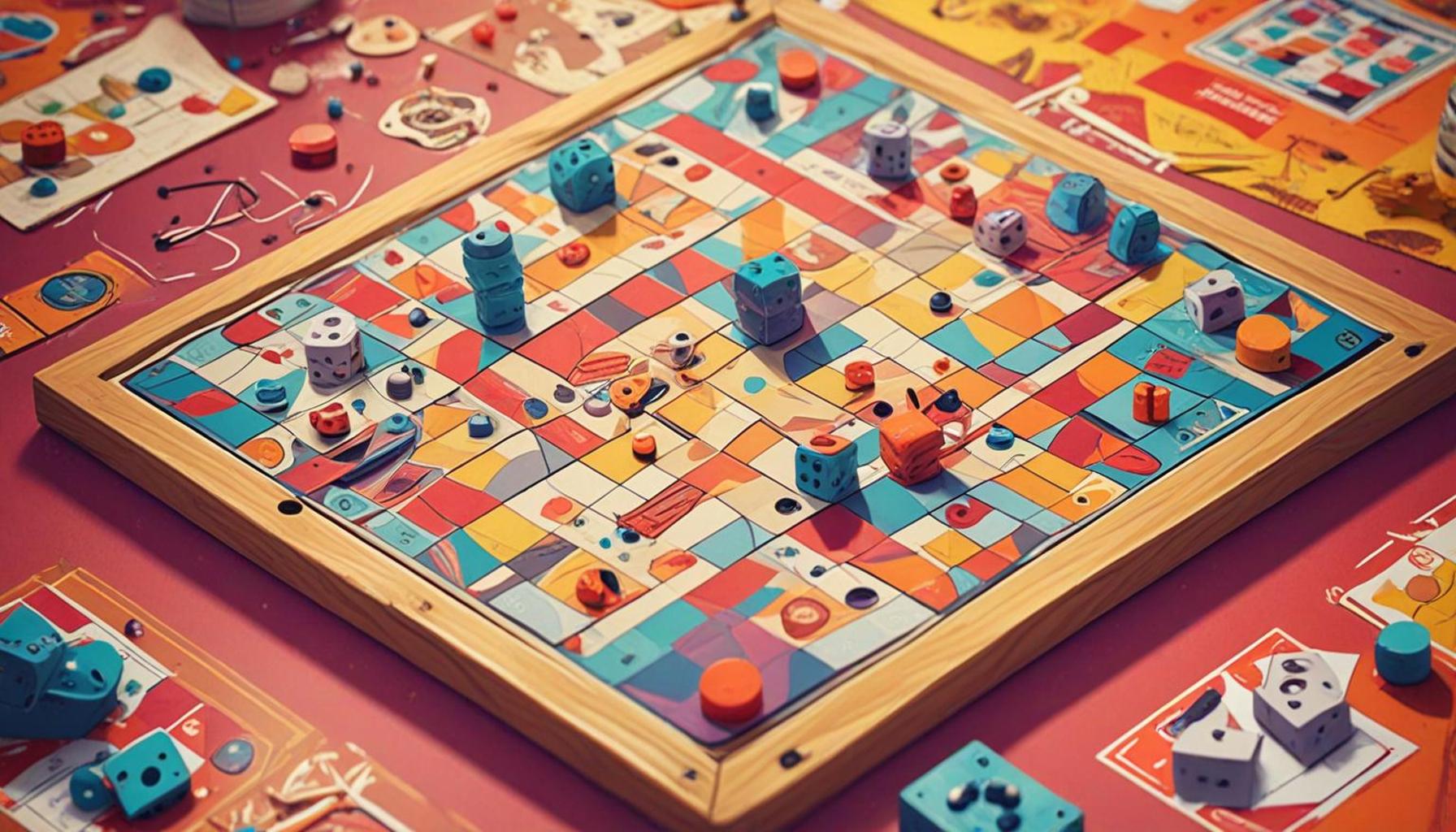Pattern Recognition in Mystery Games: How Visual and Auditory Clues Influence Puzzle Solving

Unlocking the Secrets of Mystery Games
In the immersive world of mystery games, players are often met with intricate puzzles that challenge their wits and perception. Pattern recognition becomes an essential skill as players navigate through various clues, both visual and auditory, to piece together the narrative. The combination of these elements significantly enhances the gaming experience, fostering a deeper connection with the storyline. For a gamer, cracking a code or solving a mystery isn’t just about reaching the finish line; it’s about being fully absorbed in a well-spun tale.
The Role of Visual Clues
Visual clues serve as the foundation for many puzzles, providing hints that players must interpret effectively. These elements are crafted meticulously to ensure that every detail counts. Key examples include:
- Symbolic representations hidden in artwork: In many games, players may find elements in drawings, paintings, or murals that signify important plot points. For instance, in a game inspired by local lore, a player might discover an emblem tied to a historical figure, unlocking a deeper understanding of the overarching story.
- Color codes that unveil secret messages: Specific colors may hint at different meanings. Using vibrancy to indicate urgency or somber tones to suggest a foreboding presence showcases how critical color choice can be. For example, a burst of red in a jungle-themed game might lead players to a hidden danger.
- Environmental cues like the arrangement of objects: In a classic ‘room escape’ setup, every object’s placement might serve a purpose. A chair pointed at a wall could imply something important lies behind it, prompting players to explore thoroughly.
Auditory Elements in Puzzle Solving
In addition to visuals, auditory clues play a crucial role in guiding players through challenges. These auditory hints help set the mood and provide context vital for piecing together narratives. Common examples include:
- Background sounds that suggest an action or solution: The creaking of floorboards might signal the presence of secret passages, urging players to investigate their surroundings closely.
- Musical tones that indicate emotional shifts: A subtle shift in the background score can hint at a change in the storyline — perhaps a character’s betrayal or an impending danger.
- Dialogue snippets that drop hints about the plot: Characters may drop important hints in casual conversation that seem trivial at first but lead to significant breakthroughs later in the game.
Understanding how these aspects interact helps players not only solve puzzles more effectively but also heightens their overall experience. In Nigeria, where gaming has rapidly gained popularity, exploring how visual and auditory clues impact puzzle solving can contribute to more engaging and culturally relevant game design. This exploration can pave the way for local developers to embed rich narratives and familiar cultural references into the fabric of their games, ensuring that they resonate with the players’ identities and experiences.
As gaming grows in Nigeria, the emphasis on blending storytelling with innovative puzzle design offers a unique opportunity to create games that not only entertain but also educate and inspire. The potential for targeting local themes, mythology, and folklore within mystery games fosters a sense of pride and community among players, encouraging them to investigate and engage.

CHECK OUT: Click here to explore more
The Intricacies of Puzzle Design
Mystery games thrive on the complexity of their puzzles, and at the heart of effective puzzle design lies pattern recognition. As gamers maneuver through the carefully constructed worlds, the ability to identify and interpret patterns—both visually and auditorily—becomes paramount. These patterns serve not just as challenges but as guides, leading players down the path of discovery and engagement. The intricacies of puzzle design often hinge on the players’ capacity to observe and decode these clues, making the gaming experience a rich tapestry of exploration.
Decoding Visual Patterns
Visual cues are often the first elements players encounter, serving as a potent catalyst for driving the narrative. In the context of mystery games, the strategic use of visual patterns can significantly shift a player’s focus and decision-making process. Notably, the inclusion of:
- Hidden messages embedded in intricate designs: Gamers might be tasked with deciphering an elaborate tapestry that harbors secrets. For example, in a game set against the backdrop of Nigeria’s historical relics, players could uncover symbols that relate to cultural tales, providing deeper insights and context.
- Layered imagery that encourages exploration: By utilizing background motifs that reference traditional folklore, games can create a multilayered experience where players are incentivized to scrutinize their environments carefully. Imagine encountering a mural depicting a legendary hero that subtly hints at the player’s next move.
- Geometric patterns that unlock interactions: The use of shapes and symmetry in puzzle design can lead players to discover hidden compartments or pathways, creatively pushing them to connect the dots through spatial awareness.
These elements not only enrich the storytelling aspect but also empower players to engage with the material in a meaningful way, often reflecting aspects of their cultural heritage and history.
The Power of Sounds in Mystery Games
Moving beyond the visual spectrum, sound design emerges as a critical avenue for player immersion. The auditory landscape of mystery games weaves an intricate sound tapestry that can evoke emotions and prompt actions. For instance:
- Echoes and reverberations that suggest hidden spaces: In a suspense-filled horror mystery, the underlying sounds of murmuring winds might indicate an approaching entity, urging players to investigate with caution.
- Distinctive sound cues tied to gameplay elements: The clinking of metal can signal the presence of a locked chest nearby, while an eerie silence might denote a critical moment in the plot, nudging players to reflect on previous clues.
- Rich musical arrangements that alter gameplay dynamics: A shift in the background score can transition the mood, signaling players that they’ve reached a climax in unraveling the plot or face an imminent challenge.
These auditory elements not only enhance the virtual atmosphere but serve as essential indicators, prompting players to leverage their auditory skills alongside visual analysis. By exploring the synergy of auditory and visual cues, players are more likely to enhance their problem-solving skills, leading to a more rewarding gaming experience overall.
As gaming evolves, especially in Nigeria, local developers have the opportunity to craft experiences that resonate with familiar narratives through strategic patterns in design. This integration can foster a sense of community and belonging while simultaneously encouraging players to think critically about the stories being told.
In the realm of mystery games, the significance of pattern recognition extends beyond mere gameplay mechanics; it taps into the cognitive processes that players utilize to solve intricate puzzles. Visual and auditory clues serve as essential elements that guide players through complex narratives, enhancing engagement and immersion. By discerning patterns in these clues, players can unlock hidden secrets that propel them further into the game’s story.
Visual clues, such as motifs, colors, or specific imagery, play a pivotal role in shaping a player’s understanding of the game world. For instance, a recurring color palette may hint at significant locations or narrative shifts. This encourages players to connect dots based on appearances and symbols, fostering a deeper analytical mindset. Similarly, auditory cues—like changes in background music or sound effects—can indicate danger, reveal secret areas, or provide hints related to solving puzzles. The auditory landscape of a mystery game can immerse players, effectively guiding them to focus on critical components of the narrative.
Research shows that humans are naturally inclined to identify patterns, which is why games utilize this instinct. The cognitive synergy between visual and auditory clues can initiate problem-solving behaviors and promote a unique gameplay experience. These patterns not only guide players but also create a sense of accomplishment as they piece together information, unlocking layers of the story that may have otherwise gone unnoticed. Engaging with these elements reinforces the player’s emotional connection with the game, highlighting the industry’s ability to blend cognitive psychology with entertainment.
| Category | Advantages of Pattern Recognition |
|---|---|
| Visual Clues | Aid in identifying key locations and narrative connections. |
| Auditory Clues | Indicate important changes in the game environment and enhance immersion. |
Understanding how players interpret these clues can reveal vital insights for game developers, paving the way for more engaging and thought-provoking experiences. As players become more adept at recognizing these patterns, the challenge and satisfaction of solving puzzles can create a buzz of excitement and joy, reinforcing their commitment to the mystery genre.
CHECK OUT: Click here to explore more
The Impact of Cultural Elements on Puzzle Engagement
As mystery games continue to gain traction, especially in Nigeria, there is a burgeoning appreciation for incorporating cultural elements within puzzle design. This cultural integration not only enriches the storyline but also provides players with familiar references that can enhance their pattern recognition capabilities. In many cases, clues derived from regional lore, art, and history provide immersive experiences that resonate deeply with local players. By understanding how cultural nuances affect player engagement, developers can climb new heights in crafting intricate puzzles.
Utilizing Folklore in Puzzle Clues
The rich tapestry of Nigerian folklore offers a treasure trove of narrative possibilities that can be intricately woven into puzzle mechanics. Implementing folklore-based puzzles requires players to recognize and interpret local myths and fables, enhancing their gameplay experience. For example:
- Legendary characters as guides: If a player encounters a puzzle involving the famous trickster Anansi, the clues might include characteristic traits or moral dilemmas tied to his tales. Understanding these narratives can help unlock hidden pathways or provide crucial hints for advancing the plot.
- Symbolic imagery: Integrating symbols from well-known folklore tales can prompt players to think critically. For example, patterns reminiscent of the masked figures in Nigerian festivals may suggest a deeper connection to hidden truths, offering players a rewarding narrative layer.
- Puzzles woven into traditional stories: A cleverly designed riddle that echoes the themes of resilience found in the epic of Sundiata can compel players to reflect on their surroundings, enhancing the game’s level of complexity.
Using culturally relevant puzzles, designers can leverage the unique experiences of Nigerian players, significantly improving their engagement and satisfaction.
Interactive Environments that Mirror Real Life
The environments in mystery games often serve as more than mere backdrops; they are interactive spaces rich with potential clues waiting to be uncovered. By incorporating real-life elements that reflect local architecture and societal motifs, developers can guide players toward recognizing patterns that otherwise would be lesser-known. Consider the following:
- Architectural clues: A building design that mimics traditional Yoruba structures can include ornate patterns that hide clues within their carvings. Players trained in recognizing these intricate designs will find themselves more adept at solving puzzles related to specific locations.
- Familiar sounds of local life: The sounds of a bustling marketplace or traditional music can create a vibrant backdrop that resonates with players. These auditory cues can lead players to uncover interactions linked to nearby object or events in the environment.
- Community-based tasks: Players may be prompted to gather artifacts from their surroundings, echoing the communal nature of Nigerian culture. This collaboration fosters teamwork while essential clues are drawn from the interactions between players and their environment.
This approach not only enhances pattern recognition skills but also creates a strong sense of place and belonging for players. They immerse themselves in scenarios that reflect their daily realities, making the gaming experience both relatable and inspiring.
The Future of Puzzle Design in Mystery Games
As the landscape of mystery games continues to evolve, the trend of visually and auditorily rich puzzle design is only expected to flourish. Developers are increasingly understanding the importance of multi-sensory engagement as an avenue to enhance player satisfaction and retention. Moreover, as people indulge in these challenging narratives, they inadvertently exercise their cognitive skills, improving their ability to recognize patterns across various domains of life.
Through an ongoing commitment to cultural relevance and immersive gameplay, mystery games have the potential to become a defining aspect of Nigeria’s digital landscape, promoting not only entertainment but also a deeper connection to the rich heritage that inspires them.
CHECK OUT: Click here to explore more
Conclusion: The Path Ahead for Pattern Recognition in Mystery Games
In summary, the interplay of visual and auditory clues in mystery games emphasizes the critical role of pattern recognition in enhancing puzzle-solving experiences. As we have examined, integrating local culture and folklore not only enriches gameplay but also taps into players’ inherent familiarity with their surroundings, making the gaming experience both engaging and educational. From leveraging legendary figures to embedding traditional symbols in puzzle mechanics, developers have a golden opportunity to create immersive worlds that resonate with local audiences, particularly in Nigeria.
As the industry trends towards a future of multi-sensory engagement, players will find greater satisfaction and cognitive challenges within these intricately woven narratives. By recognizing objects, sounds, and cultural motifs, players can boost their analytical skills while enjoying a storyline steeped in their own heritage. The potential for mystery games to become a pivotal element of Nigeria’s digital culture is immense, fostering both a sense of community and the celebration of rich traditions.
Ultimately, as developers continue to explore these avenues of puzzle design, the emphasis on player agency and cultural relevance will serve not only to captivate but also to cultivate a generation adept at solving intricate puzzles—both in-game and in real life. The journey of pattern recognition is just beginning, inviting players to unravel mysteries that challenge their intellect while deepening their connection to their cultural narratives.


